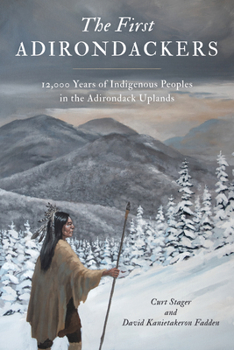The First Adirondackers: 12,000 Years of Human Presence in the Adirondack Uplands
The First Adirondackers challenges the widespread, long-standing belief that the Adirondack uplands of northern New York were uninhabited before the arrival of European colonizers. Nothing could be farther from the truth. Through local indigenous traditions and supporting findings by natural science, authors David Fadden and Curt Stager expose, document, and honor the long human presence in the Adirondacks, helping not only to redefine what it means to be an Adirondacker, but also contributing to a more complete understanding of America itself.
Like the upland mosaic of public and private lands that it describes, The First Adirondackers is a cultural crossroads in which Indigenous and Western worldviews meet, both figuratively and in the personal lives of the co-authors. Together, they use their different cultural backgrounds and professional expertise to reveal the human history of the uplands, the region defined as everything situated between 1000 feet elevation and the top of Mount Marcy, a mile above sea level. Fadden, a master storyteller and renowned painter, uses traditional oral history and stunning works of art to capture the humanity and vitality of Indigenous peoples of the region. Stager, a natural science professor at Paul Smith's College, explains in scientific terms how people are elementally linked to the land, species, and waters of the Champlain-Adirondack region through his own research on the environmental history of the region and by documenting more than three dozen locations in the uplands where ancient items of Indigenous origin have been found.
By challenging the predominant Eurocentric narrative of the Adirondacks, The First Adirondackers does not seek to erase history, but rather to help recover a proud and wonderful history.





